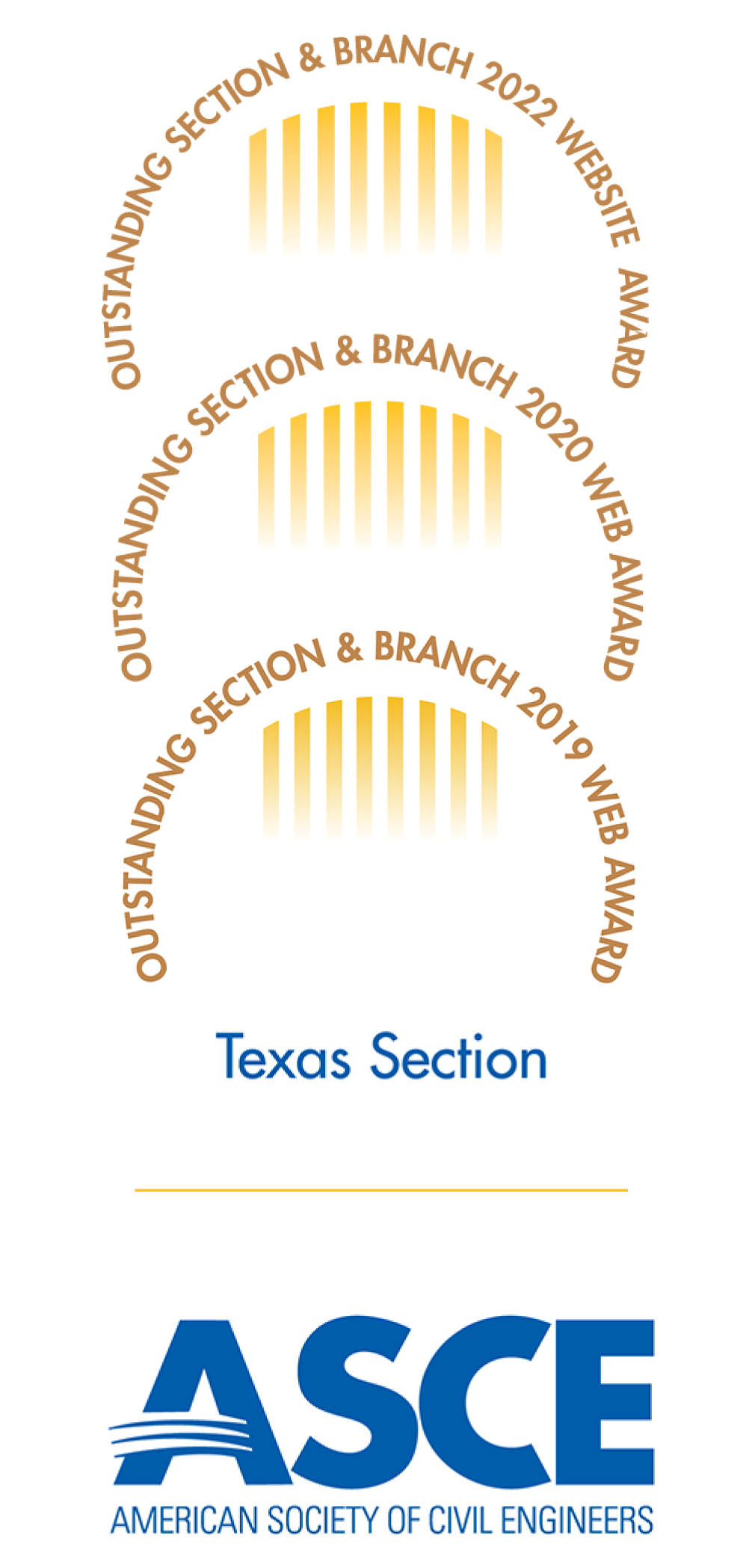DeSpain Bridge, Early Texas Pioneer Bridge
October 2021
by Melinda Luna PE | History & Heritage Committee Chair

On SH 154/SH 19, there is Texas Historical Marker that discusses the DeSpain Bridge. The inscription details where the Bonham Jefferson road cross the South Sulphur River, the bridge was built by Brig (Benjamin Franklin) DeSpain, a farmer that moved to Texas from Kentucky. It goes on to say, he received the land from Randolph DeSpain who had been originally granted the land but was killed in the Battle of Goliad in 1836.
In the Texas 1850 census Brig DeSpain is listed as a farmer but the name may indicate he had a military background and might have been trained to build bridges though some military training.
In a search of newspaper archives, nothing was found specifically about the building of the DeSpain Bridge. But we can compare this bridge to another well-known bridge, the Waco Suspension Bridge, which was completed in 1870 and measured 475 feet.
Because of this lack in archival documentation, not much is known about the bridge other than it was built of native oak and bois d’arc. The bridge was built to hold ox wagons and horse drawn vehicles, so we can conclude that the bridge was at least six feet wide. While oak and bois d’arc trees grow in the area, DeSpain would either need to turn the raw wood into building materials locally or import it from the Coast where sawmills were located at the time. Bridge builders were sought by counties and put advertisements in newspapers at the time. Exactly when the bridge was built is not clear but DeSpain came to Texas somewhere between 1841 to 1848 and it can be assumed the bridge was built within 1 year of his arrival.
To estimate a length for the bridge, the precise location of bridge needed to be found. Looking at old maps, the bridge was located over what was referred to as Harpers Crossing, which has been found on historic topographic maps in an area now underwater in Jim Chapman Lake. In one references, the bridge is described as able to span most floods which would indicate that the bridge was thousands of feet long. In looking at similar efforts of bridge building in Texas as documented in newspaper articles, the timber bridges built of the time were rather long (thousands of feet). At the time of construction, bridges were in such demand, some neighboring landowners would go as far as joining funds to underwrite the building of a bridge.

In Archeological and Bioarcheological Perspective: The Tucker & Sinclair cemeteries of Delta County, Texas by Susan A. Lebo, she states that the bridge was built in 1845 and replaced in 1865. In some articles about the bridge, it was reported that the bridge was washed out somewhere between 1869 and 1870. With statewide floods in both years 1869-1870, this is a strong possibility.
At some point during its existence, G.W. Harper received a permit to operate a toll bridge in the same location of the DeSpain Bridge. During this time, a toll bridge was a legislative act that was advertised in local newspapers. But again, still not much was found on the width and length of the bridge.
The Texas State Historical marker #6933, referenced above, was erected in 1970. The marker is located near Cooper, Texas at 33° 21.732′ N, 95° 36.506′ W in Delta County. There is no doubt that any type of bridge being built in this area at the time was an engineering feat when you look at the difficulty of getting building materials and experience/trained labor. The building of this bridge was especially interesting due to it being a part of early Texas civil engineering history from the 1840s.
Additional reading: Supplying our own Texas bridges to Texans, TxDOT Beyond The Road, July 15, 2020
Share this story:








